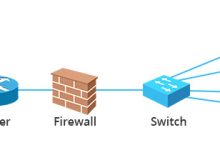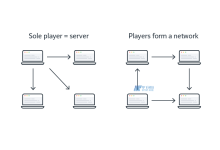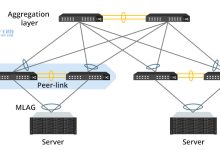在Linux操作系统中,MTAB代表”mounted table”,是一个包含系统当前已挂载文件系统的列表。MTAB文件记录了系统中每一个已经挂载的文件系统的类型、挂载点、文件系统的参数等等。
MTAB文件最初是由系统管理员手动创建的,但是在现代Linux发行版中,MTAB文件已经被自动化,并且在系统启动时由init脚本扫描挂载点的文件,并将挂载文件系统的数据写入MTAB文件中。
作用
MTAB文件的主要作用是提供有关当前挂载的文件系统列表的信息。MTAB文件包含了当前系统所有已经挂载的文件系统的类型,挂载点和文件系统参数的信息。此外,MTAB文件还可以用于验证已挂载文件系统的正确性,以及管理挂载点和文件系统的参数。
MTAB文件有助于系统管理员了解有关文件系统的信息。如果有必要重新安装文件系统或者挂载点,系统管理员可以参考MTAB文件以获取有关挂载点和文件系统的信息。
MTAB文件通常保存在”/etc/mtab”目录下。可以使用以下命令来查看当前挂载文件系统的列表:
$ cat /etc/mtab
该命令会输出MTAB文件的全部内容。在MTAB文件中,每个文件系统条目包括全部的文件系统和挂载点的信息。以下是一个典型的MTAB文件的示例:
rootfs / rootfs rw 0 0
sysfs /sys sysfs rw,nosuid,nodev,noexec 0 0
proc /proc proc rw,nosuid,nodev,noexec 0 0
udev /dev tmpfs rw,size=10m,mode=0755,nosuid,nodev 0 0
tmpfs /dev/shm tmpfs rw,size=10m,mode=1777,nosuid,nodev 0 0
devpts /dev/pts devpts rw,nosuid,noexec,gid=5,mode=0620 0 0
MTAB文件是一个记录已挂载的文件系统信息的表格。它提供了有关系统中文件系统的类别、挂载点、文件系统参数等重要信息,并可以作为验证、管理、查询挂载点和文件系统参数的基础。
在linux系统中,理解MTAB文件的含义和作用是非常重要的。通过了解MTAB文件的内容和使用方法,系统管理员可以更有效地管理文件系统,确保系统的稳定性和安全性。
相关问题拓展阅读:
- /etc/fstab文件和/etc/mtab文件是什么关系?
- Linux磁盘管理
/etc/fstab文件和/etc/mtab文件是什么关系?
他们两个在结构和内容上基本是相同的,也同样在一个文件夹之下,只不过他们的记录的分区信息不同。
前者主要是存放了系统启动时需要挂载的文档信息,每当系统自动启动的时候,系统就会读取这些文件,当系统需要挂载的时候,系统就会选择这种挂载。
而后者主要用于系统启动之后,系统产生挂在文件,这其中也包括他的系统建立的窨井文件,可以直接通过后者来确定或者查询,两者的功能,可以说是一前一后的,也可以认为是相辅相成的。
这个文件更好不要动它,是给你看的,不是给你改的 fstab 文件想必大家都很熟悉,记录了计算机上硬盘分区的相关信息,启动 Linux 的时候,检查分区的 fsck 命令,和挂载分区的 mount 命令,都需要 fstab 中的信息,来正确的检查和挂载硬盘。
/etc/fstab文件记录静态文件系统信息,按照/etc/fstab上的介绍,该文件记录计算机硬盘分区相关信息,启动Linux、mount挂载分区等命令执行都,都会用到fstab信息,看页面示例也是带有: 。
文件系统,挂载点,分区类型,挂载选项,dump选项,这样的格式内容,但天缘自己从Ubuntu 11.04上抓到却是这么个内容,其它细节没看,至少直接打开来查询外部SD卡驱动器路径有点问题。
Linux磁盘管理
是一个创建和维护分区表的程序,它兼容DOS类型的分区表、BSD或者SUN类型的磁盘列表。
语法
fdisk
必要参数:
-l 列出素所有分区表
-u 与”-l”搭配使用,显示分区数目
选择参数:
-s 指定分区
-v 版本信息
菜单操作说明
m :显示菜单和帮助信息
a :活动分区标记/引导分区
d :删除分区
l :显示分区类型
n :新建分区
p :显示分区信息
q :退出不保存
t :设置分区号
v :进行分区检查
w :保存修改
x :扩展应用,高级功能
(英文全拼:make file system)命令用于在特定的分区上建立 linux 文件系统。
使用方式 :
mkfs filesys
参数 :
device : 预备检查的硬盘分区,例如:/dev/sda1
-V : 详细显示模式
-t : 给定档案系统的型式,Linux 的预设值为 ext2
-c : 在制做档案系统前,检查该partition 是否有坏轨
-l bad_blocks_file : 将有坏轨的block资料加到 bad_blocks_file 里面
block : 给定 block 的大小
命令是经常会使用到的命令,它用于挂载Linux系统外的文件。
语法
mount mount -a mount > device | dir
mount device dir
参数说明:
-V:显示程序版本
-h:显示辅助讯息
-v:显示较讯息,通常和 -f 用来除错。
-a:将 /etc/fstab 中定义的所有档案系统挂上。
-F:这个命令通常和 -a 一起使用,它会为每一个 mount 的动作产生一个行程负责执行。在系统需要挂上大量 NFS 档案系统时可以加快挂上的动作。
-f:通常用在除错的用途。它会使 mount 并不执行实际挂上的动作,而是模拟整个挂上的过程。通常会和 -v 一起使用。
-n:一般而言,mount 在挂上后会在 /etc/mtab 中写入一笔资料。但在系统中没有可写入档案系统存在的情况下可以用这个选项取消这个动作。
-s-r:等于 -o ro
-w:等于 -o rw
-L:将含有特定标签的硬盘分割挂上。
-U:将档案分割序号为 的档案系统挂下。-L 和 -U 必须在/proc/partition 这种档案存在时才有意义。
-t:指定档案系统的型态,通常不必指定。mount 会自动选择正确的型态。
-o async:打开非同步模式,所有的档案读写动作都会用非同步模式执行。
-o sync:在同步模式下执行。
-o atime、-o noatime:当 atime 打开时,系统会在每次读取档案时更新档案的『上一次调用时间』。当我们使用 flash 档案系统时可能会选项把这个选项关闭以减少写入的次数。
-o auto、-o noauto:打开/关闭自动挂上模式。
-o defaults:使用预设的选项 rw, suid, dev, exec, auto, nouser, and async.
-o dev、-o nodev-o exec、-o noexec允许执行档被执行。
-o suid、-o nosuid:
允许执行档在 root 权限下执行。
-o user、-o nouser:使用者可以执行 mount/umount 的动作。
-o remount:将一个已经挂下的档案系统重新用不同的方式挂上。例如原先是唯读的系统,现在用可读写的模式重新挂上。
-o ro:用唯读模式挂上。
-o rw:用可读写模式挂上。
-o loop=:使用 loop 模式用来将一个档案当成硬盘分割挂上系统。
(base) zfy@zfy-PC:~$ sudo fdisk -l
Disk /dev/sda: 80 GiB,bytes,sectors
#块设备名称为/dev/sda,此设备的大小为80 GB,bytes是转换成字节后的大小,共个扇区
Disk model: VMware Virtual S
Units: sectors of 1 * 512 = 512 bytes
Sector size (logical/physical): 512 bytes / 512 bytes
I/O size (minimum/optimal): 512 bytes / 512 bytes
Disklabel type: dos
Disk identifier: 0x3b1ffeba
Device Boot StartEnd Sectors Size Id Type
#分区序列 | 引导 | 开始 | 终止 | Sectors | 容量 | 分区类型ID | 分区类型
/dev/sda1 *.5G 83 Linux
/dev/sda.5G 5 Extended
/dev/sdaG 83 Linux
/dev/sdaG 82 Linux swap / Solaris
/dev/sdaG 83 Linux
/dev/sdaG 83 Linux
/dev/sda.5G 83 Linux
Partition table entries are not in disk order.
a. 在虚拟机中添加硬盘,添加后使用fdisk -l命令查看,磁盘变成两个,在sda中还没有分区
root@zfy-PC:/home/zfy# fdisk -l
Disk /dev/sda: 2 GiB,bytes,sectors
Disk model: VMware Virtual S
Units: sectors of 1 * 512 = 512 bytes
Sector size (logical/physical): 512 bytes / 512 bytes
I/O size (minimum/optimal): 512 bytes / 512 bytes
Disk /dev/sdb: 80 GiB,bytes,sectors
Disk model: VMware Virtual S
Units: sectors of 1 * 512 = 512 bytes
Sector size (logical/physical): 512 bytes / 512 bytes
I/O size (minimum/optimal): 512 bytes / 512 bytes
Disklabel type: dos
Disk identifier: 0x3b1ffeba
Device Boot StartEnd Sectors Size Id Type
/dev/sdb1 *.5G 83 Linux
/dev/sdb.5G 5 Extended
/dev/sdbG 83 Linux
/dev/sdbG 82 Linux swap / Solaris
/dev/sdbG 83 Linux
/dev/sdbG 83 Linux
/dev/sdb.5G 83 Linux
Partition table entries are not in disk order.
b.下面对sda进行分区
root@zfy-PC:/home/zfy# fdisk /dev/sda
Welcome to fdisk (util-linux 2.33.1).
Changes will remain in memory only, until you decide to write them.
Be careful before using the write command.
Device does not contain a recognized partition table.
Created a new DOS disklabel with disk identifier 0xb985e226.
Command (m for help): m
#输入m查看帮助
Help:
DOS (MBR)
a toggle a bootable flag
b edit nested BSD disklabel
c toggle the dos compatibility flag
Generic
d delete a partition
F list free unpartitioned space
l list known partition types
n add a new partition
p print the partition table
t change a partition type
v verify the partition table
i print information about a partition
Misc
m print this menu
u change display/entry units
x extra functionality (experts only)
Script
I load disk layout from sfdisk script file
O dump disk layout to sfdisk script file
Save & Exit
w write table to disk and exit
q quit without saving changes
Create a new label
g create a new empty GPT partition table
G create a new empty SGI (IRIX) partition table
o create a new empty DOS partition table
s create a new empty Sun partition table
Command (m for help): n
#输入n创建一个分区
Partition type
p primary (0 primary, 0 extended, 4 free)
e extended (container for logical partitions)
Select (default p): p
#选择主分区
Partition number (1-4, default 1): 1
#选择编号为1
First sector (, default 2023):
#起始sector 设为
Last sector, +/-sectors or +/-size{K,M,G,T,P} (3, default):
#终止sector 设为
Created a new partition 1 of type ‘Linux’ and of size 827.3 MiB.
#分区完成,分区大小为827.3 MiB
Command (m for help): n
#继续创建一个分区
Partition type
p primary (1 primary, 0 extended, 3 free)
e extended (container for logical partitions)
Select (default p): e
#新增扩展分区
Partition number (2-4, default 2): 2
#选择编号为2
First sector (, default 2023): 2023
#起始sector为2023
Last sector, +/-sectors or +/-size{K,M,G,T,P} (, default):
#终止sector为
Created a new partition 2 of type ‘Extended’ and of size 1.2 GiB.
#新增完成,大小为1.2GiB
Command (m for help): w
#保存
The partition table has been altered.
Calling ioctl() to re-read partition table.
Syncing disks.
c.查看分区后磁盘信息,此时sda磁盘已经有两个分区
Disk /dev/sda: 2 GiB,bytes,sectors
Disk model: VMware Virtual S
Units: sectors of 1 * 512 = 512 bytes
Sector size (logical/physical): 512 bytes / 512 bytes
I/O size (minimum/optimal): 512 bytes / 512 bytes
Disklabel type: dos
Disk identifier: 0xb985e226
Device Boot Start End Sectors Size Id Type
/dev/sda.3M 83 Linux
/dev/sda.2G 5 Extended
Partition table entries are not in disk order.
Disk /dev/sdb: 80 GiB,bytes,sectors
Disk model: VMware Virtual S
Units: sectors of 1 * 512 = 512 bytes
Sector size (logical/physical): 512 bytes / 512 bytes
I/O size (minimum/optimal): 512 bytes / 512 bytes
Disklabel type: dos
Disk identifier: 0x3b1ffeba
Device Boot StartEnd Sectors Size Id Type
/dev/sdb1 *.5G 83 Linux
/dev/sdb.5G 5 Extended
/dev/sdbG 83 Linux
/dev/sdbG 82 Linux swap / Solaris
/dev/sdbG 83 Linux
/dev/sdbG 83 Linux
/dev/sdb.5G 83 Linux
Partition table entries are not in disk order.
d.用ext3的文件系统对分区进行格式化
root@zfy-PC:/home/zfy# mkfs -t ext3 /dev/sda1
mke2fs 1.44.5 (15-Dec-2023)
Creating filesystem withk blocks andinodes
Filesystem UUID: dbaf1-4eec-a62d-f2b2f8e0ec96
Superblock backups stored on blocks:
, 98304,
Allocating group tables: done
Writing inode tables: done
Creating journal (4096 blocks): done
Writing superblocks and filesystem accounting information: done
e.新建一个分区目录 /data,并挂载
root@zfy-PC:/home/zfy# mkdir data
root@zfy-PC:/home/zfy# mount /dev/sda1 /data
root@zfy-PC:/home/zfy# df -TH /data/#查看是否挂载成功
文件系统类型 容量 已用 可用 已用% 挂载点
/dev/sdaext3 838M 881k 793M 1% /data
f. 用vim打开 etc/fstab并假如 /dev/sda1/data ext3 defaults 0 0,这样重启后便不需要再挂载
参考文献:
【1】 Linux mount命令 | 菜鸟教程 (runoob.com)
关于linux mtab 缩写的介绍到此就结束了,不知道你从中找到你需要的信息了吗 ?如果你还想了解更多这方面的信息,记得收藏关注本站。

 国外主机测评 - 国外VPS,国外服务器,国外云服务器,测评及优惠码
国外主机测评 - 国外VPS,国外服务器,国外云服务器,测评及优惠码













